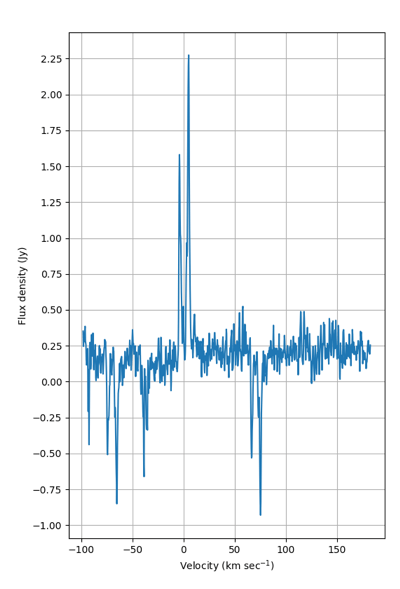This web page is created within BALTICS project funded from the European Union’s Horizon2020 Research and Innovation Programme under grant agreement No.692257.
For the first time in the history of VIRAC average noise level was below 0.25 Jy
febr. 10, 2020
In the period from 24 January to 2 February, 2020 several radio astronomical observation sessions were conducted in order to test the capabilities of of the Irbene RT32 radio telescope by observing non-bright* OH masers in 1.665MHz and 1.667MHz frequencies. The observation was organised within the framework of the project "Complex Investigations of the small bodies in the Solar system" (No.Izp-2018/1-0401) in which one of the activities is Investigations of Solar System small bodies, including OH maser line detection (flux density 40 mJy or 0.04 Jy) in 1.665MHz and 1.667MHz frequencies.
Improvements to the 1.6 GHz frequency band receiver and noise abatement activities of surrounding systems have, for the first time in the history of the VIRAC, resulted in average noise levels below 0.25 Jy at 1.665MHz and 1.667MHz by processing several-day observational data. Work on observations and data processing is ongoing, as the desired result is to reduce the resulting noise level to 0.02 Jy in order to successfully detect solar system comets in the 1.6GHz frequency band.
R Lmi [1] object OH maser spectre obtained during data processing (LCP - left circular polarisation). 1665 MHz line profile consists of two distinct maxima where the obtained radial velocities are V1= -3.86 km/s and V2= +4.69 km/s and the flux density is respectively F1max= 1.57Jy and F2max= 2.28 Jy.
*it is called non-bright maser if its flux density is below 2 Jy.
[1] More information about the observed object can be found in the SIMBAD astronomical database: http://simbad.u-strasbg.fr/simbad/sim-basic?Ident=R+Lmi&submit=SIMBAD+search
E-pasts: virac@venta.lv
Tālrunis: +37163629656
Ekskursijas: +37129230818
Inženieru iela 101, Ventspils, LV-3601
Paldies par ziņu.
Mēs ar jums sazināsimies cik drīz vien iespējams.
Atvainojiet, ir notikusi kļūda.
Diemžēl ziņu nosūtīt neizdevās.
Lūdzu mēģiniet vēlreiz, vai sūtiet ziņu uz virac@venta.lv



















